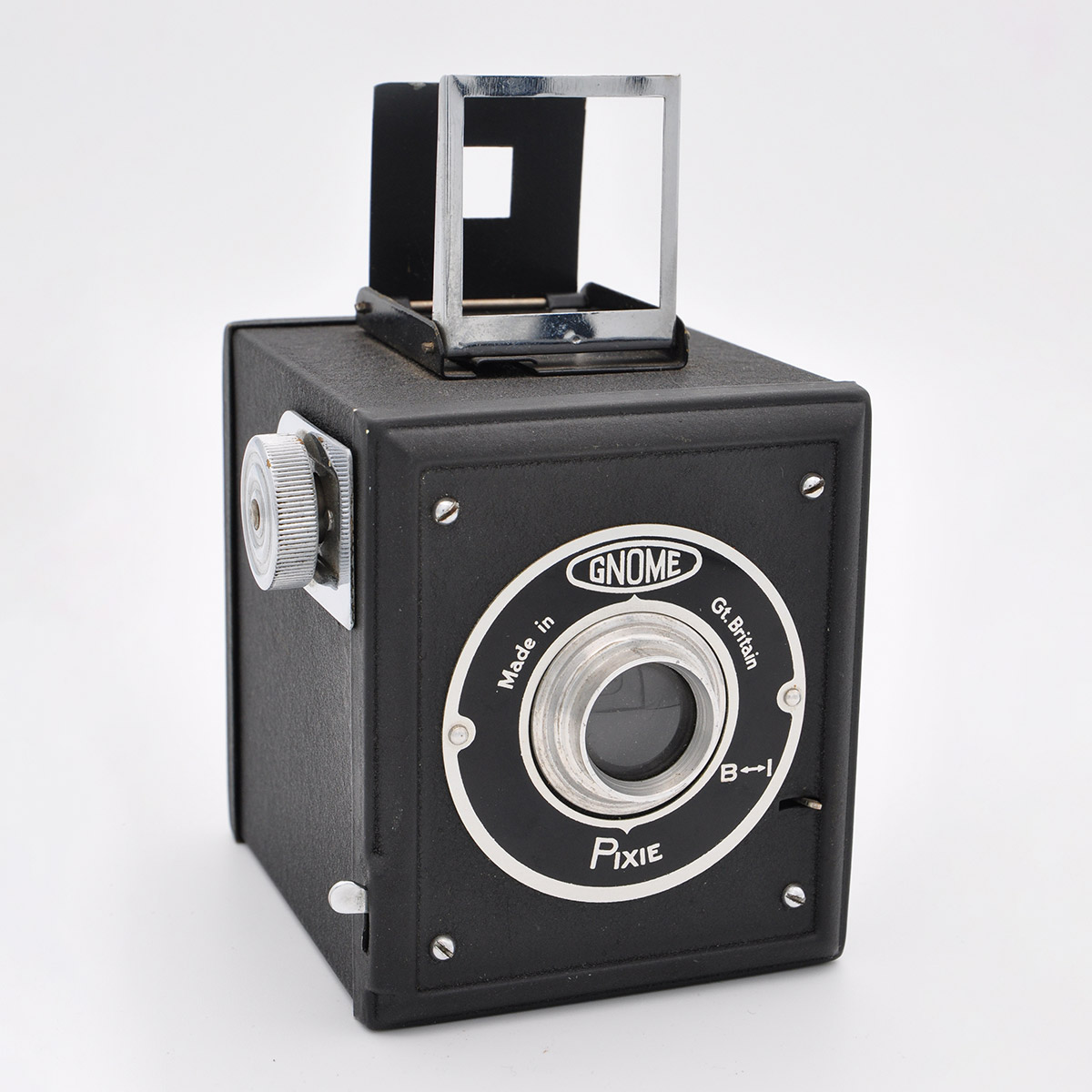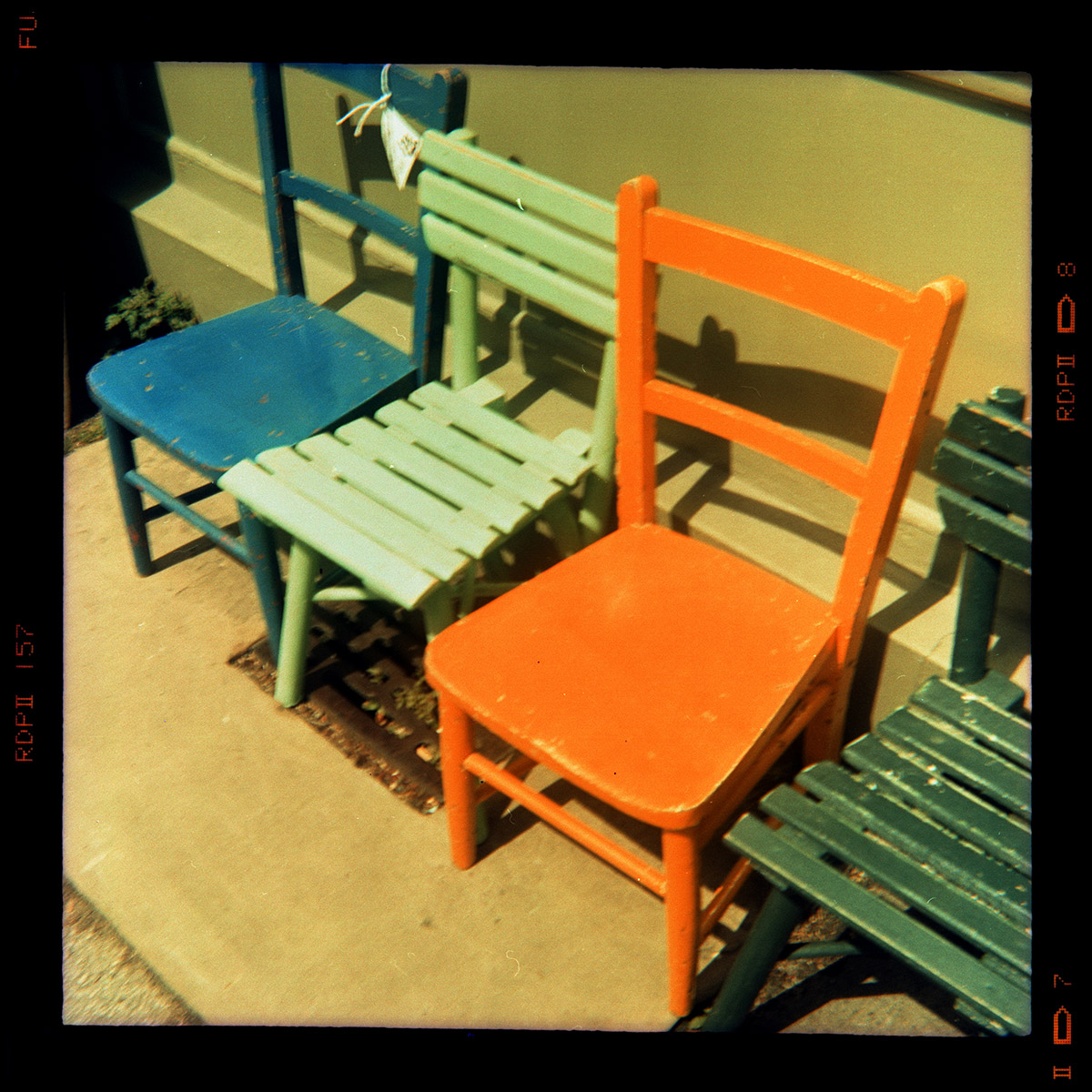Gnome Pixie
Recently I wrote about a camera made by Durst, an Italian company mainly known for making photographic enlargers, so it was a happy coincidence that I then stumbled across a British counterpart, this time from Gnome, another firm usually associated with darkroom equipment rather than cameras. Apparently at one time 80% of enlargers sold in the UK were made by Gnome, but like Durst, they also made a handful of cameras, including the Pixie.
I spotted this little metal cube on a table at my local car boot sale, and was immediately struck by its condition, which was nothing short of pristine. In my experience box cameras tend to be in working order, there is, after all, very little to go wrong, but they also tend to be cosmetically challenged, especially when, as with this little Pixie, they are not in a case.
My school darkroom had a Gnome enlarger, and while that had a near spherical body, compared to the cube of the Pixie, the build style and quality immediately felt familiar to me when I picked it up to examine it in more detail. Constructed from thin metal sheet, it feels like a small biscuit tin, albeit finished in black enamel rather than with a colourful design.
Like a biscuit tin it’s a little fiddly to open, requiring gentle coaxing rather than brute force, but once you’re inside it’s a simple job to load the film. Various sources, both in print and online, told me that the Pixie takes 620 film, which would have meant re-rolling some 120 film onto a 620 spool, as the 620 format was discontinued in 1995, but I found that I was able to fit a standard 120 film in the camera, which is often not the case, 620 spools being slimmer.
Camera design doesn’t get much simpler than this, there’s a knob to wind the film on, a lever to select “B” or “I” (bulb or instantaneous) shutter speeds, and a shutter release. The viewfinder is a fold up sports finder, consisting of a square metal frame at the front, and a square hole at the back. It’s no surprise that this is a bit hit and miss in use, and it’s best to allow plenty of space around your subject to ensure that you don’t loose bits at the edges of the frame. The shutter release is a narrow piece of metal, which only protrudes 6mm and so needs a bit of effort to overcome the force of the spring, I found that it left a small indentation in my right thumb each time I took a photo!
With a fixed aperture of around f22, this is definitely a fair weather camera, but the upside of the small aperture is that there is plenty of depth of field, which is a necessity given the fixed focus lens. Image quality is not great from the single element meniscus lens, but the softness seemed appropriate for this picture of a llama and her baby taken in my local park.


